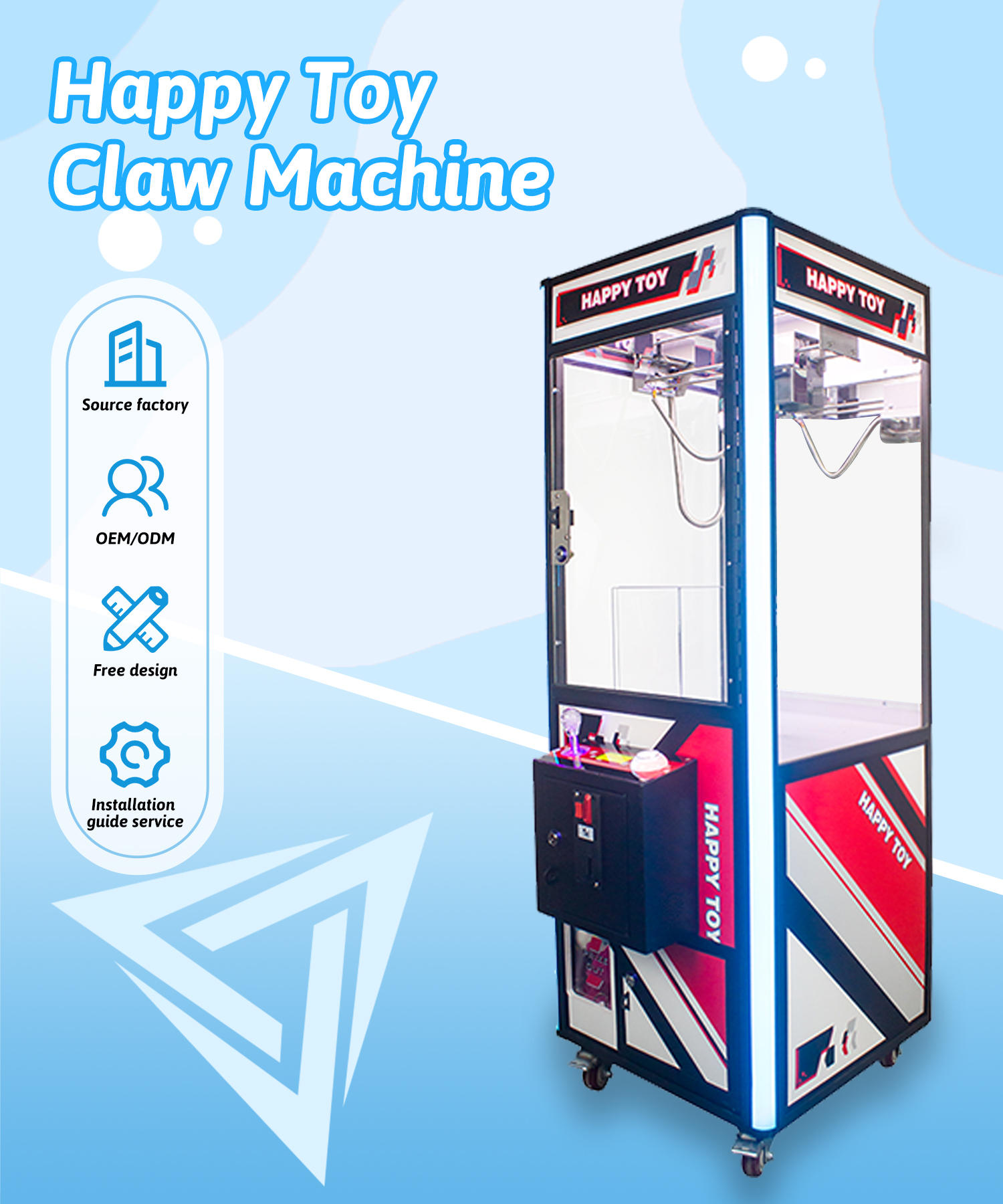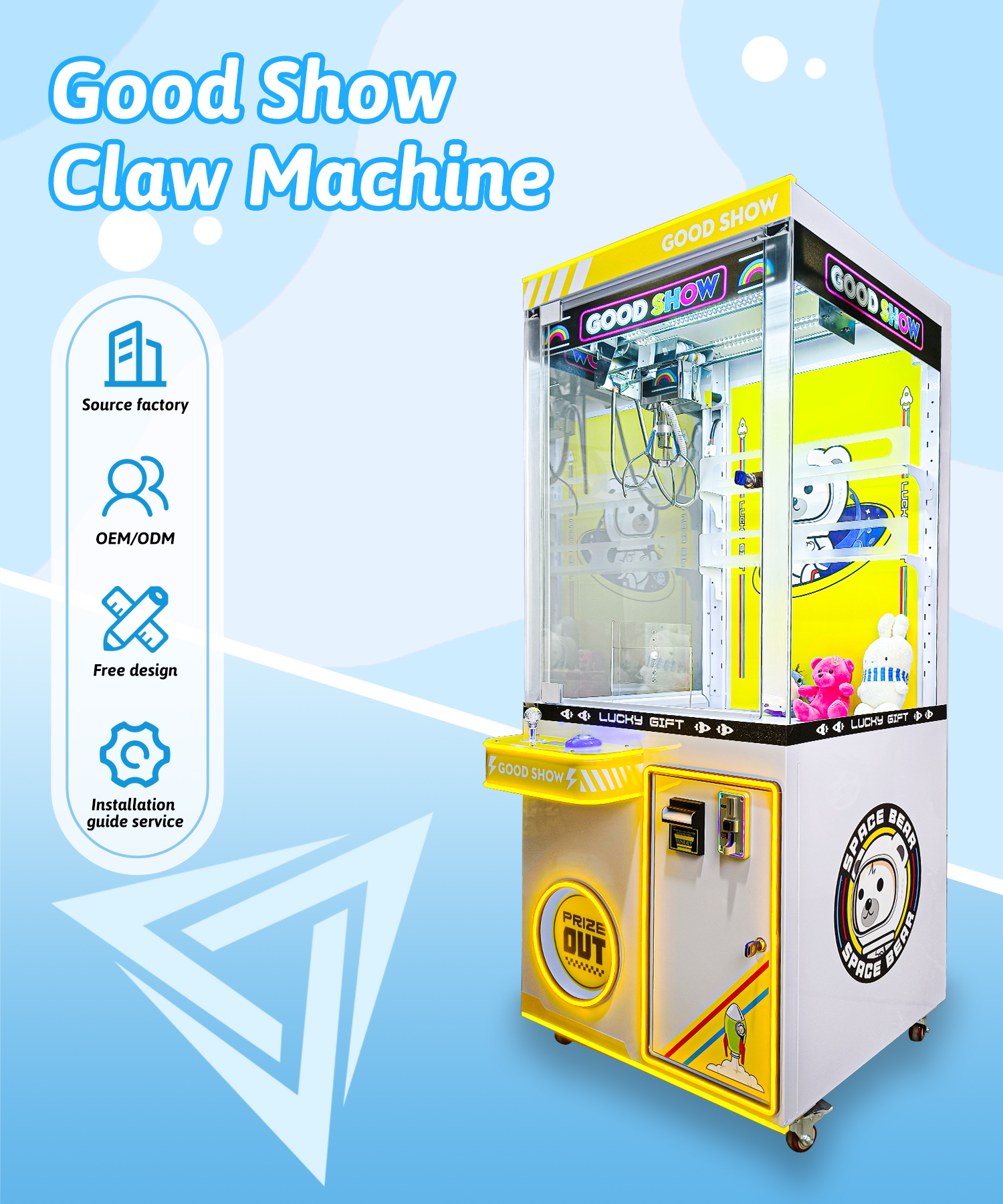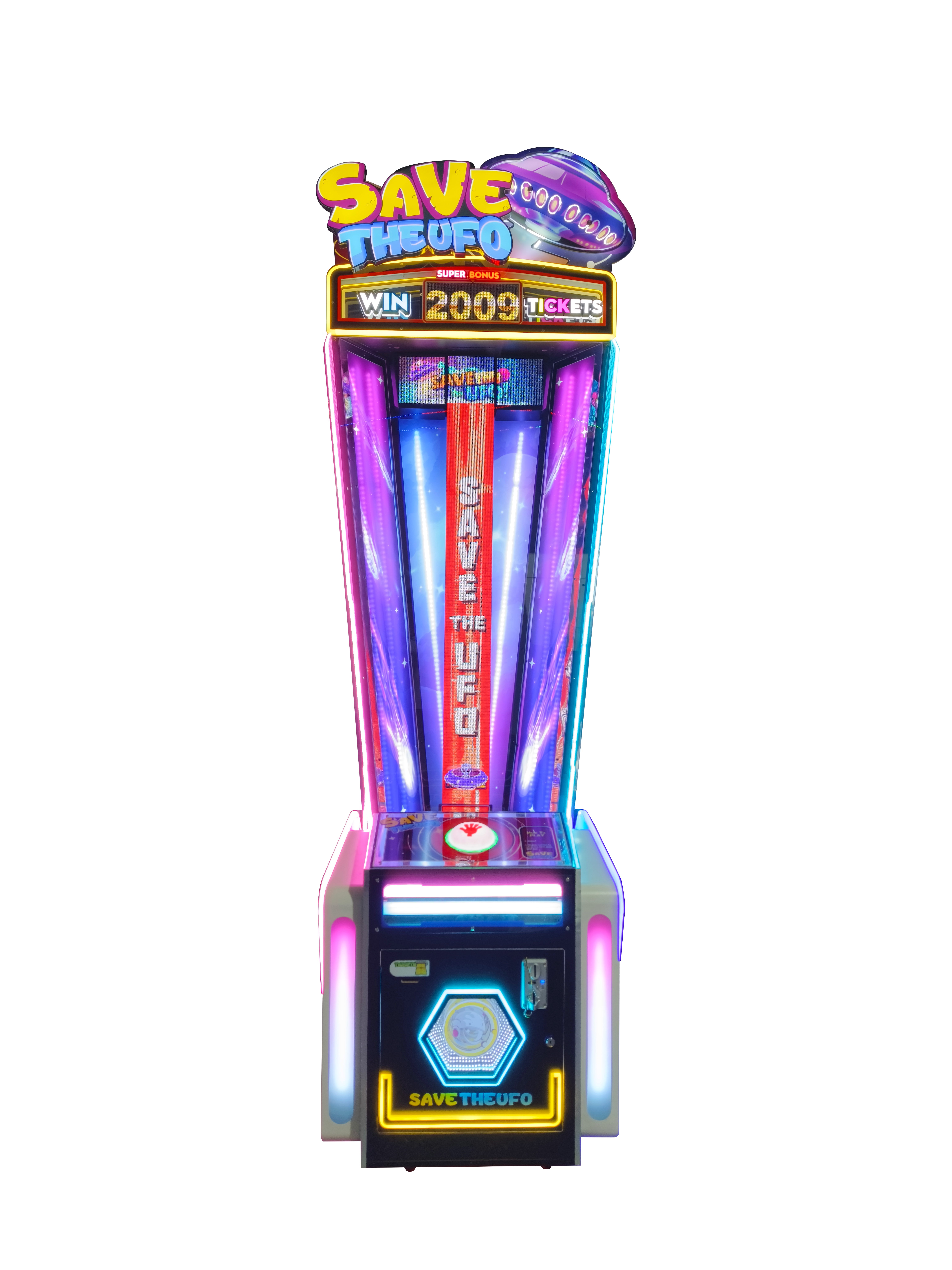Claw machine claws operate using a combination of motors and electronics that control their movement and gripping strength. Typically, the claw’s grip strength can be programmed to vary, allowing operators to adjust the difficulty level based on the type of prizes and desired profitability.
Table of Contents
ToggleThe Basics of Claw Machine Operation
Control and Input Devices
Imagine you’re standing in front of a claw machine at your local arcade. With a dollar bill in hand, you slide it into the dollar bill acceptor, known as the DBA. The machine whirs to life, validating your dollar, adding a credit to your session. Now, you’re ready to play. This acceptor checks the bill’s authenticity, size, and other features to ensure it’s real money. Similarly, the coin mechanism assesses quarters for size, weight, and magnetism. Once your coin drops through, it hits a switch, signaling the game to start.
Power Supply and Control
Once your money is in, the real magic starts. The machine’s power supply kicks into action, converting the AC voltage from the wall into usable DC voltages that fuel the game’s brain—the main control board. Think of it as the machine’s command center. From here, all your joystick movements and button presses translate into action. As you maneuver the claw left and right, the board receives these signals and directs the claw accordingly.
Power and Control Systems
The Power Supply and Transformer
At the heart of the claw machine, the power supply unit is hard at work converting the arcade’s AC voltage into usable DC voltages for the game’s electronics. Right beside it, the transformer adjusts the high 120 volts AC from your typical wall outlet down to a safer 48 volts AC.
The Rectifier’s Role
Post-transformation, the rectifier steps in, crucially converting the 48 volts AC into a stable 48 volts DC. This precise conversion is essential, as direct current powers the motors with the consistency needed for accurate movements of the claw. Without this, the claw might jerk or stall, frustrating players and disrupting the game flow.
The Main Control Board
The main control board acts as the command center of the operation, processing every tilt of the joystick and press of a button. This board sends exact commands to the motors, directing the claw’s every move. It’s finely tuned to be responsive and precise, translating your strategic maneuvers into real-time action inside the machine.

Programming and Settings
Intelligent Programming
At the core of each claw machine, a main game control board operates diligently. This board isn’t just processing player inputs; it’s also loaded with software that dictates everything from claw movement speeds to grip strength. For example, some claw machines are programmed to change the claw’s grip strength based on the payout rate, a setting designed to ensure the game remains profitable while still offering a fair chance to players.
Sound and Software
Integrated into this control board are also the sound systems. Imagine the thrill when the machine plays a victorious tune as you successfully grab a prize. These sounds aren’t just for entertainment; they’re strategically placed to enhance player engagement and excitement. Moreover, if an operator decides it’s time for an update, both the sound chips and the software chips are replaceable, allowing for easy upgrades that can introduce new sounds or alter gameplay dynamics.
Fine-Tuning Gameplay
Each machine is fitted with dip switches that allow operators to adjust basic game functions easily. These might include turning the sound on or off, setting the cost per play, or adjusting the game’s payout rate. By flipping these switches according to the game manual, operators can customize the gaming experience to fit the location or expected player base.
Advanced Settings
For even more precise adjustments, many machines include a secondary control board featuring potentiometers and push-button switches. These tools are crucial for fine-tuning higher-level settings like the claw’s basic strength or the game’s volume. Adjusting the claw strength potentiometer, for instance, directly affects how tightly the claw grips, which can be the difference between a frustrating near-miss and a satisfying win.
Mechanical Components of the Claw
Crane and Trolley System
Atop the claw machine, hidden within the casing, lies the crane and trolley system—essential for the claw’s navigation across the prize pit. This system includes motors and gears that facilitate smooth horizontal and vertical movements. One motor controls the trolley’s movement along the X-axis (left and right), while another manages the Y-axis (forward and back). As you maneuver the joystick, signals are sent to these motors, guiding the claw over your selected prize with precision.
Dropping the Claw
When you’ve positioned the claw and are ready to strike, pressing the designated button initiates the descent. Here, a third motor comes into play, lowering the claw with a controlled tension that is crucial for both reaching and grasping the prizes effectively. This motor must balance speed and stability to prevent the prizes from being jostled out of position, a task managed by the main control board’s programming.
Gripping Mechanics
The gripping action of the claw is pivotal. Typically, the claw comprises three fingers, each engineered to close with a synchronized, gentle firmness—enough to lift a prize without causing damage. This grip strength is not constant; it’s often programmed to vary, increasing the game’s challenge. The operator can adjust this via settings on the control board, tweaking it based on the types of prizes and desired difficulty level.
Feedback Sensors
To ensure the game operates fairly and within expected parameters, several sensors are integrated within the mechanics. For example, when the claw reaches the bottom of its descent, a switch is triggered, signaling the control board to initiate the grip sequence. Similarly, when the claw retracts with a prize, sensors detect if the prize chute has been successfully reached, prompting the release mechanism. This system not only enhances the gameplay but also helps maintain the integrity of the game’s operation, preventing mechanical faults from unfairly denying players a well-earned victory.

Additional Features and Enhancements
Prize Detection
One significant enhancement in many modern claw machines is the inclusion of a photocell or photo-eye sensor located at the prize chute. This sensor plays a critical role in prize verification. As you successfully maneuver a prize into the chute, it interrupts a beam of light cast across the opening. This disruption signals the game’s control system that a prize has been won, allowing the machine to adjust the payout rate accordingly.
Audio Feedback
Audio feedback is another layer that enhances the player’s experience. When a prize is won, the machine typically plays celebratory sounds or music, adding to the excitement and attraction of the game. These sound effects are not just for entertainment; they serve as immediate positive reinforcement for successful players, encouraging continued interaction and additional attempts.
Customization and Upgrades
Operators have the ability to customize various aspects of the claw machine to keep the gameplay engaging and to adapt to different environments or target audiences. This includes changing the software chip to update or modify game features, replacing sound chips to refresh the audio cues, and adjusting the LED displays and lighting to attract more players.
Control Panel Accessibility
The accessibility of control panels and adjustment settings is crucial for operators. These panels allow for on-the-fly adjustments to game difficulty, such as claw strength and payout rates, without needing extensive downtime for the machine. For instance, if an operator notices that too many prizes are being won (or too few), adjustments can be made quickly to ensure the game remains challenging yet fair.
Security Features
Finally, security features play a pivotal role in protecting the machine from tampering and theft. Robust locking mechanisms for the access panels and the coin and bill collectors help prevent unauthorized access. Additionally, some claw machines are equipped with alarm systems that trigger when tampering is detected, providing an extra layer of security.








